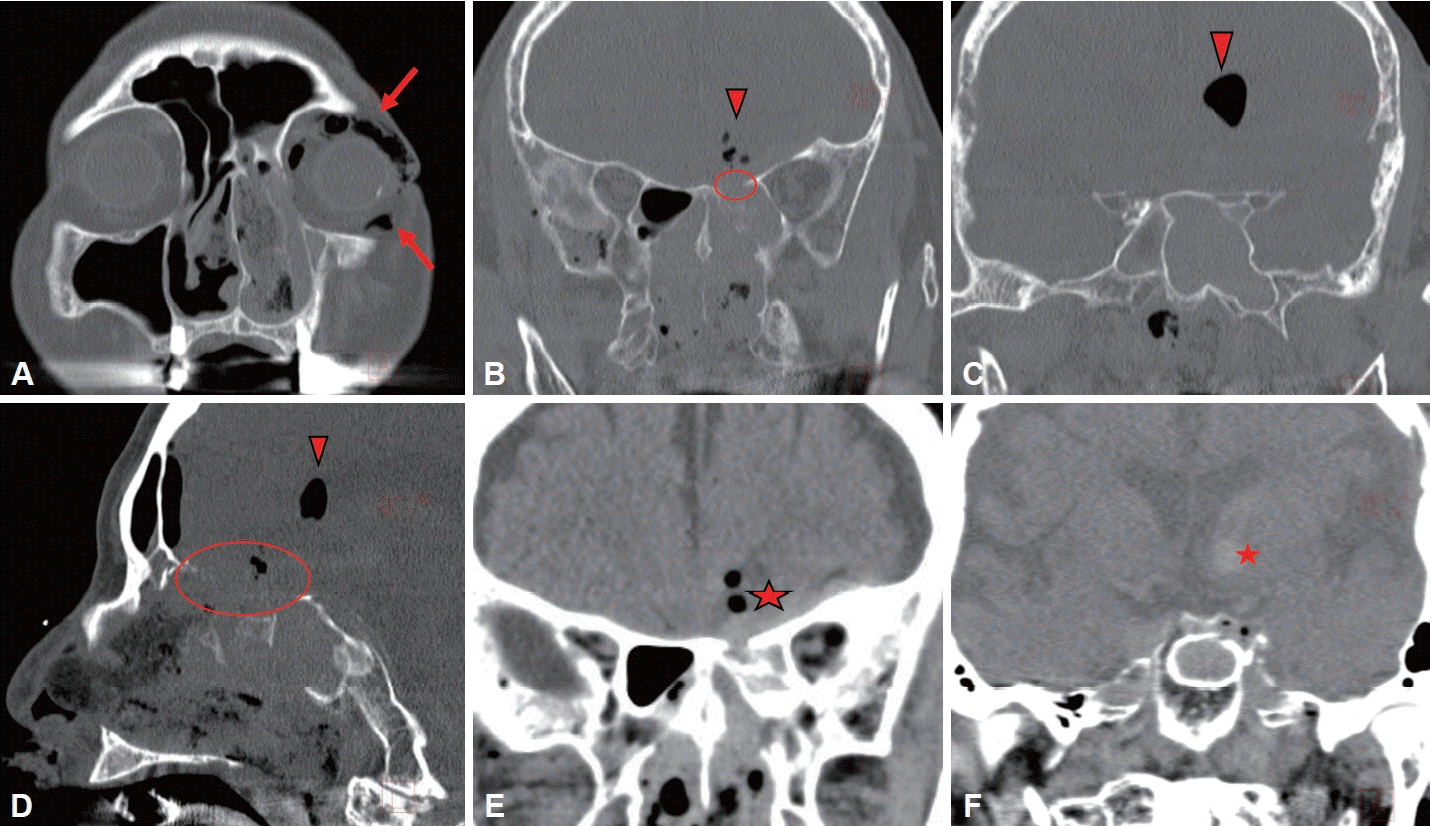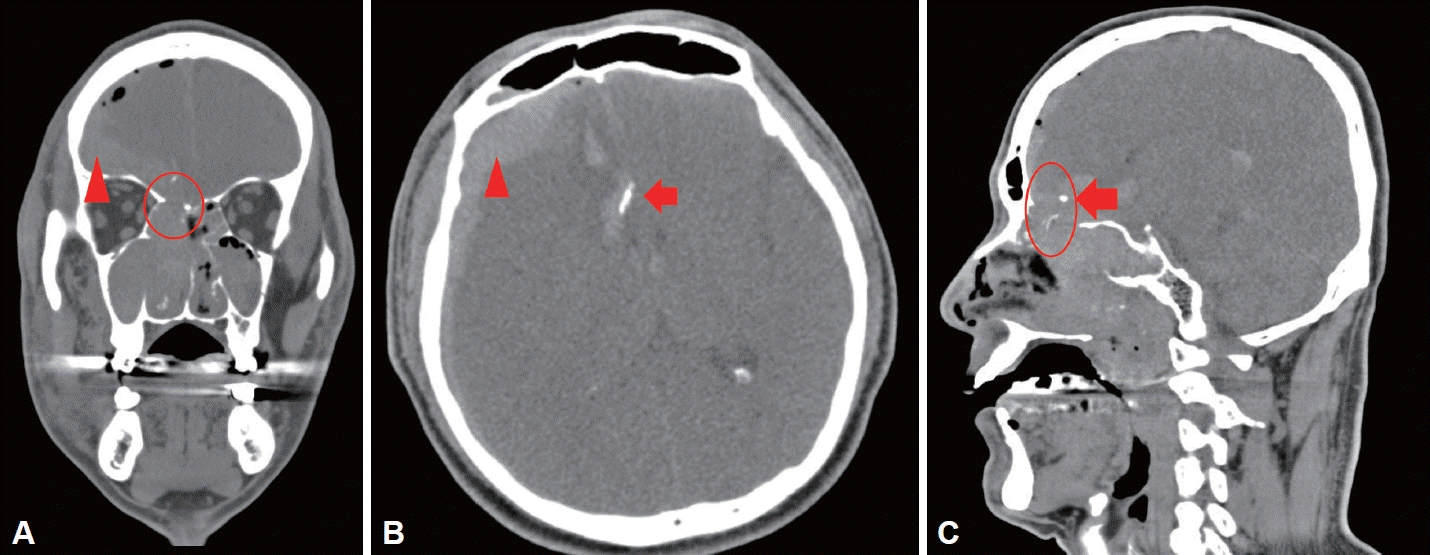1. Stevens WW, Schleimer RP, Kern RC. Chronic rhinosinusitis with nasal polyps. J Allergy Clin Immunol Pract. 2016; 4(4):565–72.
2. Kubik M, Lee S, Snyderman C, Wang E. Neurologic sequelae associated with delayed identification of iatrogenic skull base injury during endoscopic sinus surgery (ESS). Rhinology. 2017; 55(1):53–8.
3. Abdullah B, Chew SC, Aziz ME, Shukri NM, Husain S, Joshua SW, et al. A new radiological classification for the risk assessment of anterior skull base injury in endoscopic sinus surgery. Sci Rep. 2020; 10(1):4600.
4. Ibrahim AA, Okasha M, Elwany S. Endoscopic endonasal multilayer repair of traumatic CSF rhinorrhea. Eur Arch Otorhinolaryngol. 2016; 273(4):921–6.
5. Bly RA, Morton RP, Kim LJ, Moe KS. Tension pneumocephalus after endoscopic sinus surgery: a technical report of multiportal endoscopic skull base repair. Otolaryngol Head Neck Surg. 2014; 151(6):1081–3.
6. Ramakrishnan VR, Kingdom TT, Nayak JV, Hwang PH, Orlandi RR. Nationwide incidence of major complications in endoscopic sinus surgery. Int Forum Allergy Rhinol. 2012; 2(1):34–9.
7. Siedek V, Pilzweger E, Betz C, Berghaus A, Leunig A. Complications in endonasal sinus surgery: a 5-year retrospective study of 2,596 patients. Eur Arch Otorhinolaryngol. 2013; 270(1):141–8.
8. Suzuki S, Yasunaga H, Matsui H, Fushimi K, Kondo K, Yamasoba T. Complication rates after functional endoscopic sinus surgery: analysis of 50,734 Japanese patients. Laryngoscope. 2015; 125(8):1785–91.
9. Fadda GL, Petrelli A, Martino F, Succo G, Castelnuovo P, Bignami M, et al. Anatomic variations of ethmoid roof and risk of skull base injury in endoscopic sinus surgery: statistical correlations. Am J Rhinol Allergy. 2021; 35(6):871–8.
10. Keros P. [On the practical value of differences in the level of the lamina cribrosa of the ethmoid]. Z Laryngol Rhinol Otol. 1962; 41:809–13. German.
11. Gera R, Mozzanica F, Karligkiotis A, Preti A, Bandi F, Gallo S, et al. Lateral lamella of the cribriform plate, a keystone landmark: proposal for a novel classification system. Rhinology. 2018; 56(1):65–72.
12. Ramakrishnan VR, Orlandi RR, Citardi MJ, Smith TL, Fried MP, Kingdom TT. The use of image-guided surgery in endoscopic sinus surgery: an evidence-based review with recommendations. Int Forum Allergy Rhinol. 2013; 3(3):236–41.





 PDF
PDF Citation
Citation Print
Print






 XML Download
XML Download